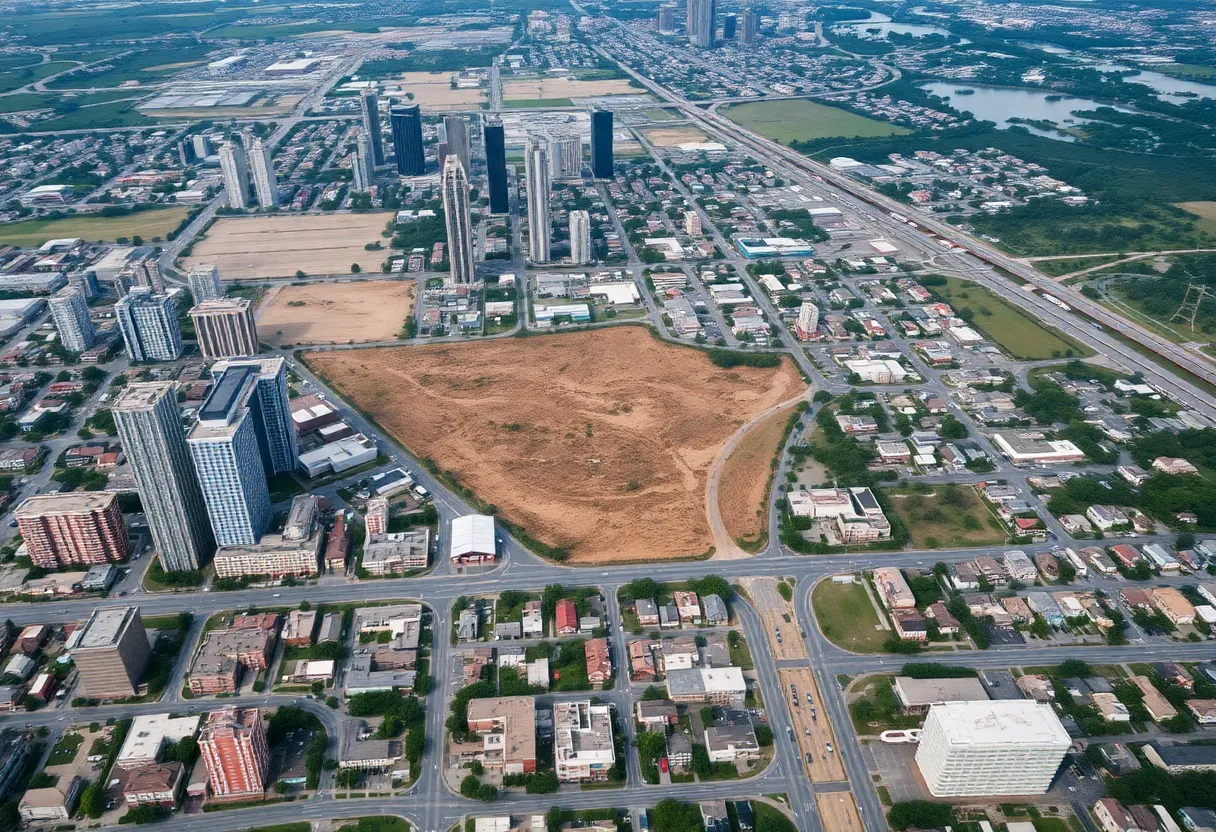News Summary
A recent study by Columbia Climate School reveals that Houston is the fastest sinking city in the US, with over 40% of its area sinking at alarming rates. The study highlights concerns over infrastructure and flood risks as urban land subsidence worsens in major cities. Contributing factors include groundwater extraction and the effects of the oil and gas industry. Urgent urban planning strategies are needed to address subsidence risks and safeguard communities from potential hazards.
Houston Declared Fastest Sinking City in US: Columbia Climate School Study Reveals Alarming Land Subsidence Rates
Houston has been identified as the fastest sinking city in the United States, according to a recent study by the Columbia Climate School released on May 8. The alarming findings highlight that over 40% of the city’s area is sinking at a rate exceeding 5 millimeters (approximately 1/5 inch) per year, with certain localized zones experiencing even faster subsidence of around 5 centimeters (about 2 inches) annually. This makes Houston a focal point of concern regarding urban land subsidence.
The study evaluated vertical land movement across 28 of the country’s most populous cities, each housing over 600,000 residents. The research employed satellite data to map this movement in detailed 90-feet square grids. Within the city of Houston, an estimated 12% of the land is subsiding at double the average rate, raising fears about infrastructure integrity and increased flood risks.
Widespread Impact Across Major Cities
Houston is not alone in facing this alarming issue; other major cities such as Fort Worth and Dallas also recorded significant land subsidence. The study revealed that 25 out of the 28 analyzed cities have at least 65% of their area sinking, including notable urban centers like Chicago, New York, and Denver, with many experiencing nearly universal subsidence over their territories. In total, around 34 million people reside in areas where land subsidence is a significant concern.
Contributing Factors to Subsidence
The primary catalyst for urban land subsidence in Houston is the extraction of groundwater, which is responsible for approximately 80% of the sinking observed. In combination with the effects of the Texas oil and gas industry, which further aggravates subsidence challenges, the situation becomes increasingly precarious. Significant subsidence issues have been documented near major infrastructure zones, including LaGuardia Airport in New York and various areas in Las Vegas, Washington, D.C., and San Francisco.
Risks and Future Implications
Houston, along with seven other cities, is home to over 60% of the population living on sinking land. This region has experienced more than 90 significant flooding events since the year 2000. As urban areas continue to sink, risks including flooding and infrastructure damage are heightened. The study estimates that approximately 29,000 buildings fall into high-damage risk scopes due to the precarious vertical movements.
Addressing Future Challenges
The study’s findings underscore the necessity for urban planning strategies targeted at subsidence mitigation. Suggested solutions encompass improved flood management practices, retrofitting of vulnerable structures, and prudent aquifer management to curb groundwater depletion. Notably, climate change is anticipated to exacerbate subsidence risks by increasing drought conditions, leading to a rise in groundwater demand.
Demand for Localized Solutions
As cities face these pressing challenges, an emphasis on tailored approaches—considering each locality’s geological and infrastructural conditions—is crucial for effective management of land subsidence. By addressing these specific factors, urban planners and policymakers can work towards safeguarding communities against the potential hazards associated with sinking land.
The implications of this study serve as a call to action for integrated urban planning, focusing not only on immediate subsidence risks but also considering the long-term impacts of climate change and resource management. With the stakes so high, cities like Houston will need to navigate these challenges head-on to ensure the safety and resilience of their populations.
Deeper Dive: News & Info About This Topic
HERE Resources
Houston Declared Fastest-Sinking City in the U.S.
Big Changes at Tesla: Is a New CEO on the Horizon?
Houston Cougars Secure NCAA Championship Spot with Comeback Win
Asian Stock Markets Experience Significant Declines
Additional Resources
- Nature: Columbia Climate School Study
- Live Science: Fastest Sinking City
- Houston Chronicle: Houston Sinking
- Community Impact: Houston Ranks Fastest Sinking
- USA Today: Big US Cities Sinking







